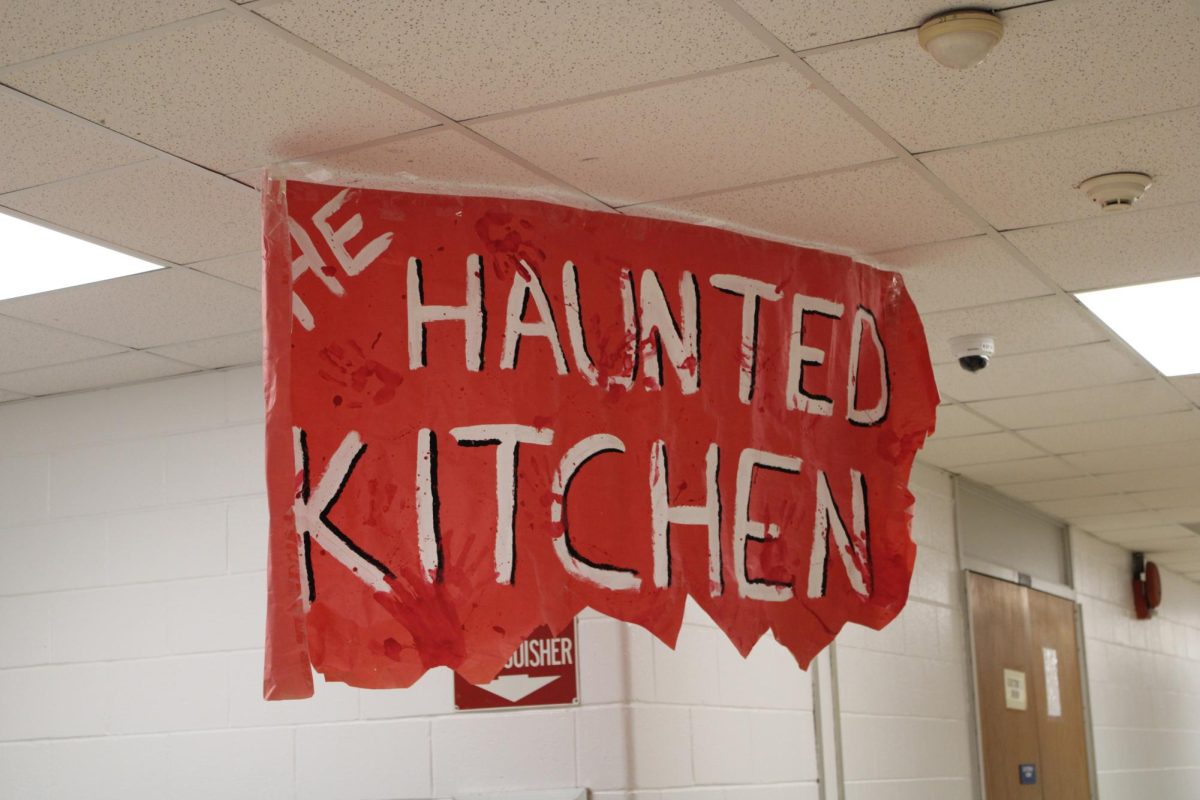Netflix’s “Castlevania” Season 2 Review: The King of Adaptations

Netflix’s “Castlevania” Season 2 Review: The King of Adaptations
October 31, 2018
“The sun will set and you will not see it rise. There will only be Dracula and his war council in the hordes of the night.”
Turning video games into both television and movies have been the entertainment industry’s hardest task to date. There probably has not been more missteps in any other category of adaptations than video games. A piece of media that can range from fifty to one hundred, or even in some cases two hundred hours, has to be curtailed into less than a few hours. Whereas video games can create lengthy movies and short burst of stories that mimic a television series, vice versa cannot be accomplished. The fact is simple; the majority of video game stories are just way too long to be adapted into most forms of media- even books for that matter. Entertainment giants that have created critical hit after hit have then take massive nosedives on a yearly basis once they dip their toes into any video game related project. Video games have a colossal spectrum of imagination due to the technology behind the digital empire. It’s understandable as to why the majority of games cannot be adapted into any other form of entertainment. While the games of today may be harder to replicate in a television show or movie due to the unaccountable amount of variables going on such as motion capture, environmental aesthetics, and real-time motion, there is an entire past library of intellectual properties oozing with potential that production companies never touch.
Immersion is the key aspect of all video games. Whether what you play looks literally identical to your real surrounding or a Saturday morning cartoon, you have this feeling of engulfment when playing games. You get mesmerized in a world that could seem real due to how much is actively going on, just like in reality. Worlds that are impossible to explore in reality are our open playgrounds in the digital world. How could any movie or television series pull off this emersion, though? How do these two types of entertainment create worlds that feel just like playing a video game? The answer you’re looking for is Castlevania on Netflix.
“Welcome to Castlevania” – This Review Contains No Spoilers
Before July 7th, 2017, I would have told you that there is no such thing as a near-perfect or even decent video game adaptation that targets mature audiences, but then Netflix swooped in and took a hard 180 on my opinion. Castlevania season one had me hooked. It was not perfect by any means- no tv show is- but it did everything it needed to do. It took a good amount of inspiration from its source material, attempted to replicate the tone of the original games, create a villain that feels like a true obstacle for the viewer and it’s characters, and focused on bringing a bunch of text and 8-bit sprites to life. It does one thing above all else right; it understands that it is a television series, not a video game. Every single adaptation of a game tries extremely hard to replicate the amazing atmospheres, the hundreds of different moving objects, the spectacular intricate designs, and detailed backgrounds. The problem is that these adaptations need to focus less on the aesthetics and more on what makes the majority of the most critically acclaimed movies and television shows loved: the story and its characters. Luckily for Castlevania though, it has a creative team that can multi-task both aesthetics and story because it smartly relies on animation rather than live action.
Castlevania season one- based off of the classic 1989 game Castlevania III: Dracula’s Curse for the Nintendo Entertainment System- brought the viewer into the world of Wallachia; a portion of Europe that sets itself in the 18th century during the rising times of religion and science. When a woman named Elisabetha finds herself on the front door of Dracula Vlad Ţepeş’ castle, Dracula’s faith in humanity is nearly restored. The mysterious and optimistic Elisabetha seeks the knowledge that the count holds in his restricted eerie castle, but she ultimately ends up teaching Dracula that not all of humanity looks to destroy each other and there are good people out there in the world such as herself. Dracula and Elisabetha fall in love and it becomes her life goal to make Dracula see the good in humanity. When The Church discovers that Elisabetha has medicine and technology that villagers have called “magic,” they burn her at the stake for practicing witchcraft while Dracula is away. Dracula loses all hope in humanity and demands genocide of the human race in retaliation for the unreasonable murder of his wife. It’s up to Trevor Belmont, the descendant of the vampire killing clan, Sypha Belnades, a magician who is a religious nomad, and Alucard, the banished son of Dracula, to restore order to Wallachia by killing the immortal vampire before he can wipe out the human race.

For a pilot season that focuses on world building for newcomers and crafting something that returning veterans could enjoy, season one did a phenomenal job and it certainly paid off as the show gained a following. But now that the stage was set, the writers were ready to slam on the gas pedal and go absolutely nuts with the sequel year. Season two is proof that media production companies are sitting on an absolute gold mine of potential; video games that are less than a couple hours that can easily fit into a short series filled with already beloved characters. Castlevania has managed to create a universe that is just as and if not more interesting than the likes of long-running movie series such as Harry Potter and Lord of The Rings. When it comes to world building, story structuring, and consistency in tone, Castlevania absolutely demolishes the competition. A story centered around moral versus immoral ideas manages to balance themes of science, religion, tolerance, genocide, and so much more. It’s ridiculous how much information the writers managed to pack into episodes that are under a half hour each. Every other department working on a series at Netflix should feel ashamed because Castlevania is leaps and bounds ahead of them despite not having access to millions of dollars in budget funding and close to a dozen entertainment hours to provide to viewers.
The story of season two starts off right back where the trio of heroes left off; preparing to begin their hunt to kill the most feared vampire in the world. Alucard, Trevor, and Sypha all interact exactly as fans of the franchise would have expected them to this season. They could not have brought these characters to life in any other way. This is exactly how I imagined these characters would be portrayed in an adaptation. Alucard and Trevor consistently tease each other due to their polar opposite pasts and Sypha is the glue of the group, as she consistently keeps the team focused on the task at hand due to them constantly bickering to each other. The three put aside all of their differences in order to unite for a common goal, but in doing so they realize that perhaps they were all the same deep down after all. The most interesting part about these three characters is their perception of the world. Sypha strongly believes in religion, while on the other hand Alucard thinks religion is ridiculous and science is the only explanation to the world. In between the two is Trevor who is suggested to not want to have anything to do with either side and has no concrete belief on the matter. Their perceptions of life create tons of comedic and tension-filled moments throughout the season. But while the present is great and all we wanted to know more about the pasts of the heroes and we certainly did. Last season Sypha received the most amount of background out of the heroes, so this season we get to know all about the history of the Belmont and Ţepeş family descendants. Alucard and Trevor are definitely the highlights of the season because of the drama that conspires from their family history. Both Alucard and Trevor’s stories will strike a chord with the viewer, but I do think Trevor is the more relatable out of the two which ultimately will leave more of an impact on the viewer.
One thing this series is able to establish well is a sense of everything being at stake. Motivation is a deceiving characteristic that many writers try to find ways around. Typically we have characters in television shows fighting because it is the “right thing to do,” but in Castlevania, we have heroes and villains with more relatable motives; motives that humanize all the characters in the story. For example, Trevor Belmont simply does not care about anyone. He is a nomad. A man whose childhood was stolen and has no other blood to continue his family legacy. The entire Belmont legacy relies on Trevor and this ultimately leads him to want to fight Dracula; continuing the Belmont trend of killing creatures seen as devils in the eyes of humans. Alucard on the other hand cares for both the vampire and human race. With both sides of his blood split into each race, Alucard is faced with a choice; to either kill vampires or humans. Alucard is going to be at loss in the end either way, but he sides with humans because they are the prey of vampires and his father is attempting to wipe out both races (with the vampires unaware of that fact- besides a few that catch on).
The show does take tons of creative liberties from its source material. Fans of the original game will know exactly what or rather who I am talking about. Grant DaNasty, the traitor of Dracula, is completely absent here. While this may seem like a glaring flaw, the show is able to balance it’s story far greater due to having to only focus on three characters rather then four. Most other adaptations I have seen always try to shove every possible character into the story even if it does not make any sense. I would rather see characters missing then have a discombobulated story that is all over the place due to having an absurd amount of characters to focus on. The character of Grant is not completely absent however. His motives of overthrowing Dracula were given to various other characters- but let’s save that for later. A smart change on the writers part, that helped give season two all the time it needed to develop the characters it had previously introduced, along with a handful of newcomers.
Castlevania’s biggest problem is that it does not even out screen time between each story arch… or well this is a problem initially. I would have loved to see more of Alucard, Trevor, and Sypha, but then my opinion completely shifted once I reached about the halfway point of the season. One terrorizing methodical lonely vampire will single-handedly change your mind completely on what you want from this series.
A Miserable Pile of Secrets

What makes or breaks a lot of television shows, however, is it’s villain and Dracula is one of the best out there. This one-dimensional final boss battle that harmed my thumbs for years has quickly become one of my absolute favorite villains that have ever appeared in a television series. This is a character that shows how important it is for all types of entertainment to explore both the hero and the villain’s story. Dracula has been completely humanized in the series and at times you will feel deep sympathy for this guy that is trying to eliminate our entire culture. This Shakespearean like character is seen as a demon and a worker of the devil, but the reasons behind his motivations are completely human and justified. Dracula’s wife was burned alive because of the opinion of one man. Dracula is the only villainous vampire in the entirety of seasons one and two that actually shows human emotions over death. He is completely lost and has no hope in not only humanity but his own race of people. His story becomes a suicidal one where he wants to eliminate everyone he sees because he feels that he has nothing left to love and no one is deserving of being alive. I don’t think I have ever actually felt this sympathetic for a villain in a television show before. He just wanted to be a good guy, but he absolutely can not catch a break from the people around him who are attempting to overthrow him and abuse his powers.
Along with Dracula is his war council; an excellent gallery of rogues who are all vampires- with two exceptions, but I will get there soon- that blend in well with Dracula’s long-term story arch. Despite all of the war council fearing their master, a large percentage of the group knows deep down that he is truly a psychopath that needs to be stopped. Carmilla, the seductive deep intentioned vampire, is the main source of the chaos being stirred up within the war council as she consistently tries to get everyone on board with the idea that Dracula is a dying old man who is consuming to much power. Hector and Isaac, on the other hand, are the only two humans in Dracula’s forces and the very few in the war council that are truly loyal to him. The two provide a look into the darker sides of human nature, but also provide a gateway for the season to look closely into the psychological well being of Dracula himself. Hector and Isaac are two forgemasters that represent two different sides of Dracula; his moral side, Hector, who hates humanity but does not believe everyone should suffer and Isaac, who hates humanity and believes that everyone should be eliminated.
Effects, Not Illusions
Going back to the topic of immersion, Castlevania does a fantastic job at throwing the audience into its demented world of vampires and hunters through both sound and visuals. The animation here has drastically increased since last season due to an obvious increase in budget, but that still does not stop everything from looking completely perfect. Sometimes the individual characters look a little weird- specifically the eyes at times- and a lack of frames can make the animation look slow in some scenes, but this is bound to happen with animation that is constantly moving and on a tight budget. Overall, the animation looks gorgeous though. The animators were not afraid to go crazy with colors just like in the original NES games. For fans of the series, there are tons of easter eggs here and memorable backdrops recreated. Everything here looks as it should. Everything is thematically fit into the world Castlevania. The designs of characters, animals, and places look like the games. You can tell that a lot of passion went into this project when they make some of the smallest callbacks that you wouldn’t even notice as a die-hard fan. Everything is distinctive, which ultimately makes a more engaging presentation. The characters are always interacting with their surroundings. One of my problems with all types of animation is that it typically ends up looking like characters walking on a flat plane. This is never the case for the show. Characters never just stand and talk, they are always doing something important. Everything you see and hear feels thematically correct. The sound design, in particular, is always on par with modern video games. Every time someone walks in the snow, draws a weapon, or even moves their cloak, there is always some sort of sound just like in real life. There are different noises for walking on different surfaces and separate noises for when weapons collide. Simple details that are usually left out in movies and television, but are usually always included in games is included here and it creates and a more immersive atmosphere as a result. There were always different lighting depending on the angle of the shot or different contrast depending on the characters current atmosphere. A show that is animated should not sound more realistic than that of a live action series but Castlevania does. While I’m on the topic of sound design, it would be a disservice to not mention the incredible voice cast working behind the scenes that provide life to these characters. Many of these voice actors deserve a mention, but there are two in particular that stand out from the crowd. Graham McTavish’s as Dracula and James Callis as Alucard provided some of the most emotional scenes I have personally witnessed in an animated series. These two knocked it out of the park and are by far the best voices of these characters to date.
One minor problem with the show I have as a long time fan is that it lacks the music used in the video games. Castlevania has such an iconic score that many gamers recognize. The only piece of music here from the series is a new rendition of fan favorite “Bloody Tears.” I definitely would have included more music from the games, but the soundtrack created by Trevor Morris does it’s job in enhancing the dreary and depressing atmospheres of the story. It’s a minor complaint but with the amount of small callbacks thrown into the animation itself, it wouldn’t have hurt to do the same on the music side.
[wpdevart_youtube]Kbb8zPQBmOw[/wpdevart_youtube]
Verdict – A Great Night For a Curse
Castlevania season two is a demonstration of how video game adaptations should be made. With an even mixture of using source material and original content, the show manages to remain exciting for both newcomers and veterans of a three-decade-old franchise. Although the series has run a bit off course in the last few years due to some misfire games, its television adaptation is bringing it back on track to the high pedestal it once stood upon. It’s no wonder why Netflix would have renewed the series so early for a third season- which will be based off of the game Curse of Darkness. Castlevania is Netflix’s crown jewel. A beautiful work of animation that blows away what all other companies are currently working on. A gold standard for future adaptations of its entertainment category. It’s not perfect, but it’s the best of its kind and has created a league of its own. I absolutely can not wait to see what is in store for next year. Even if you are not a fan of the video games, this is still a series well worth checking out.












































